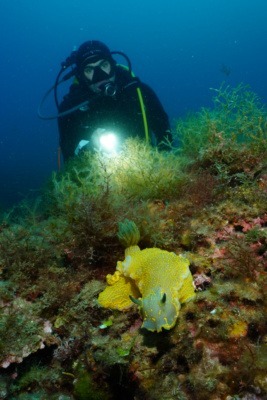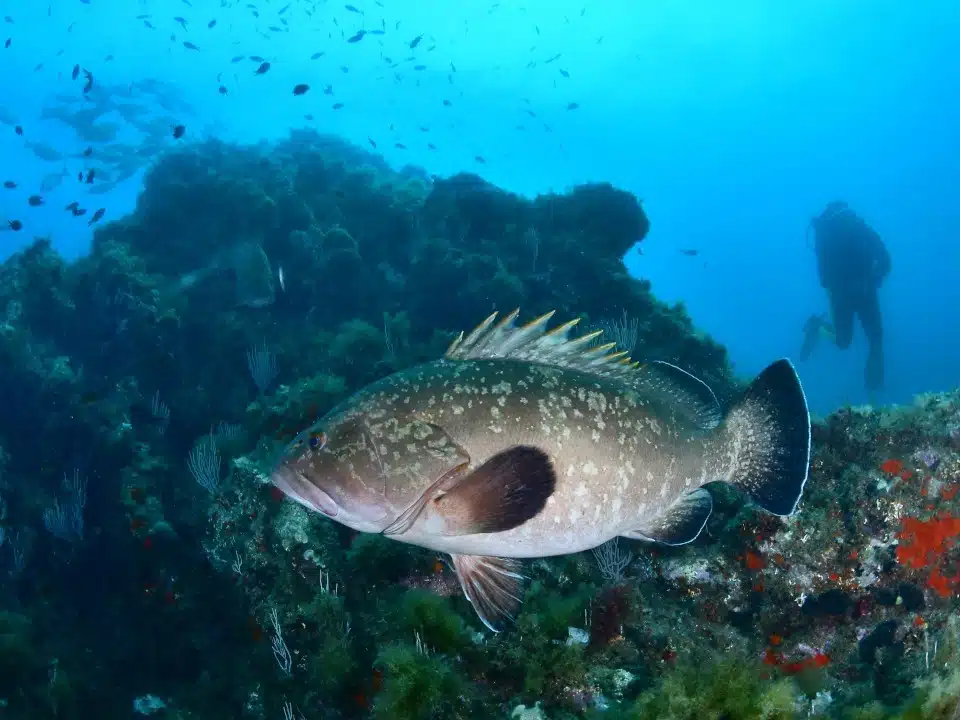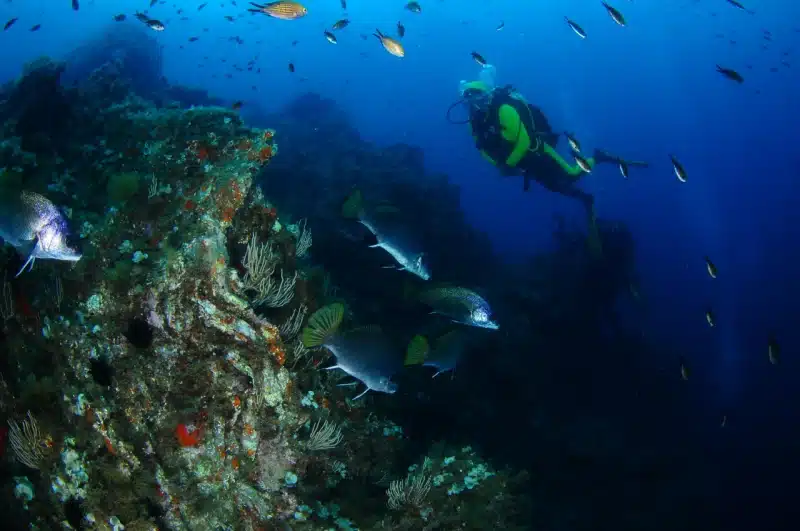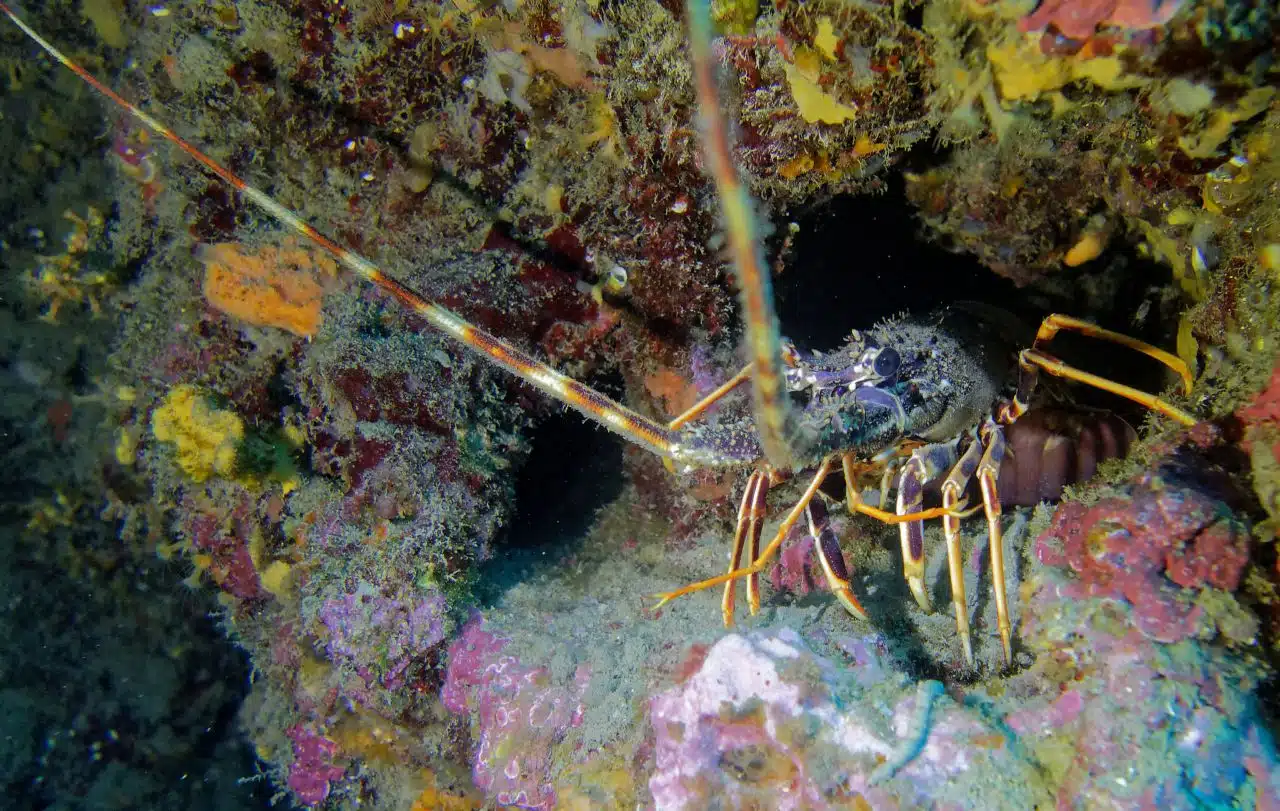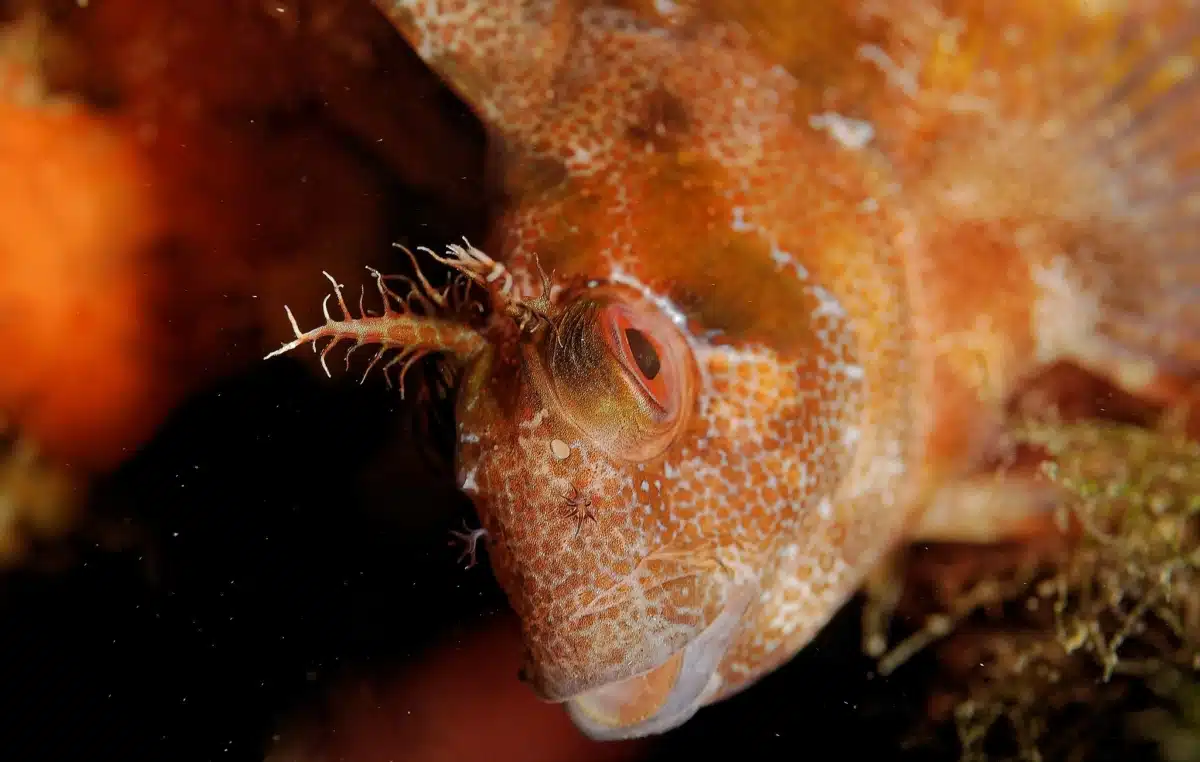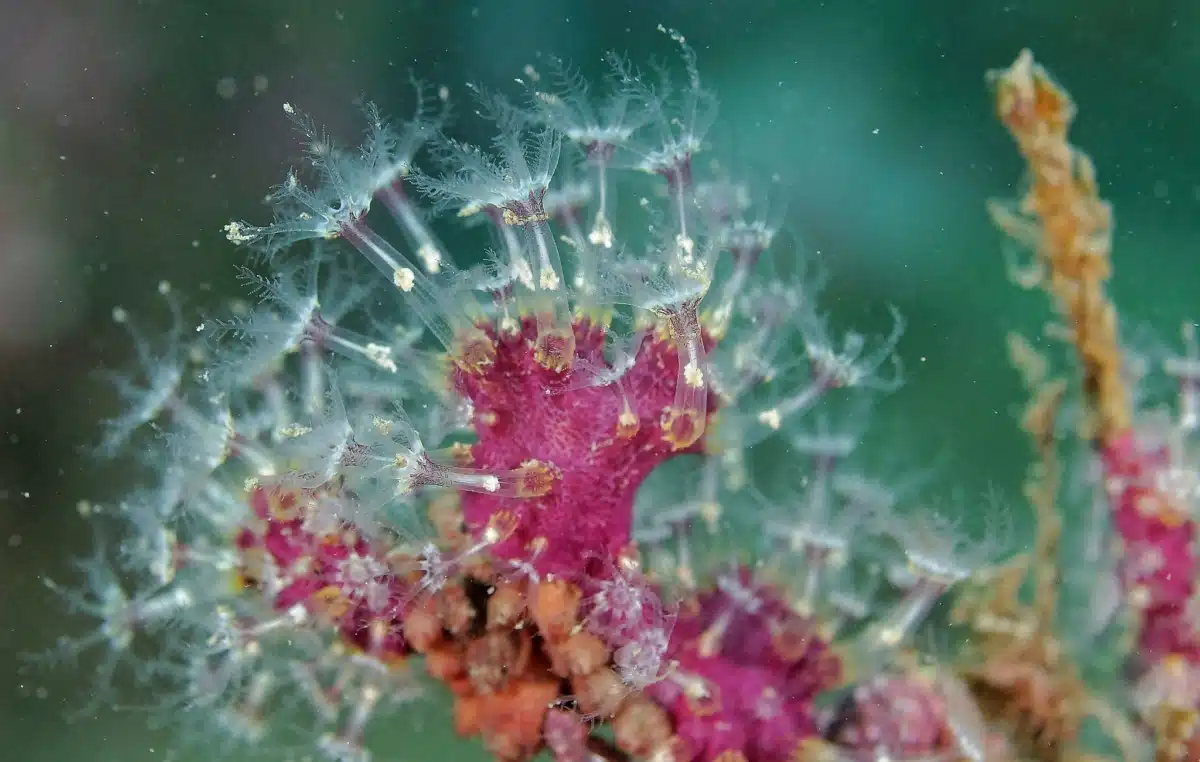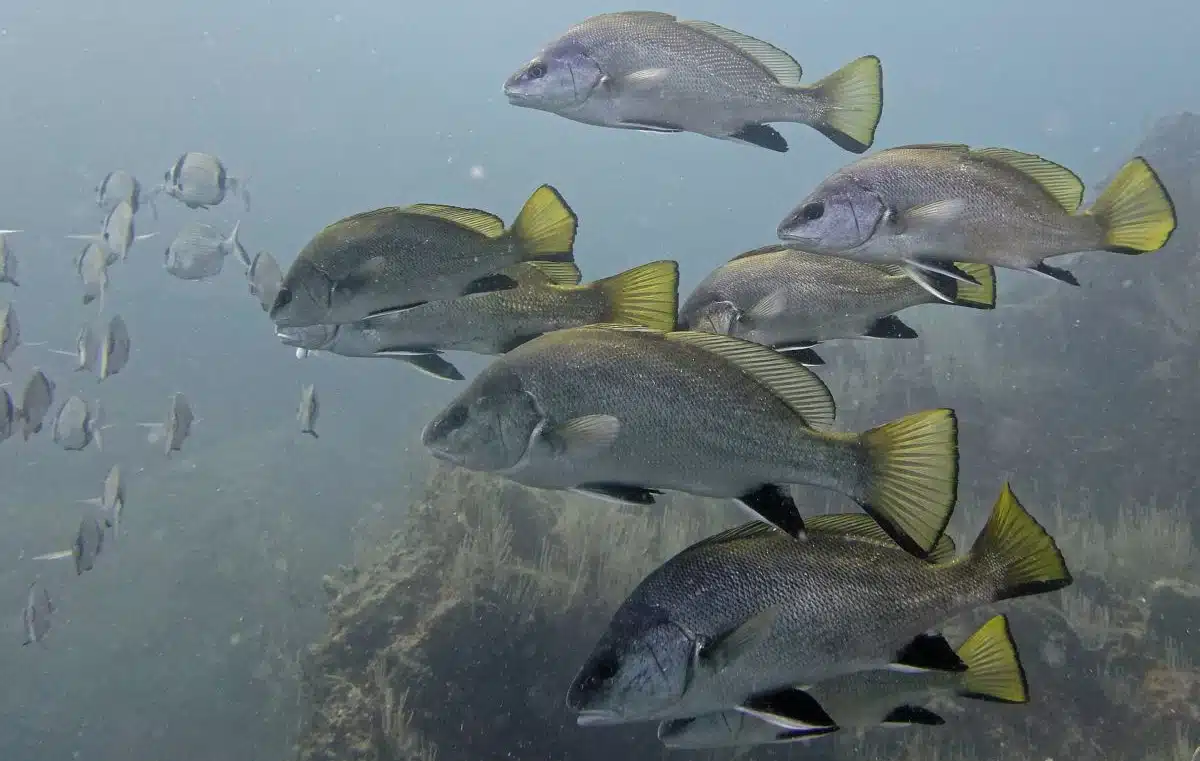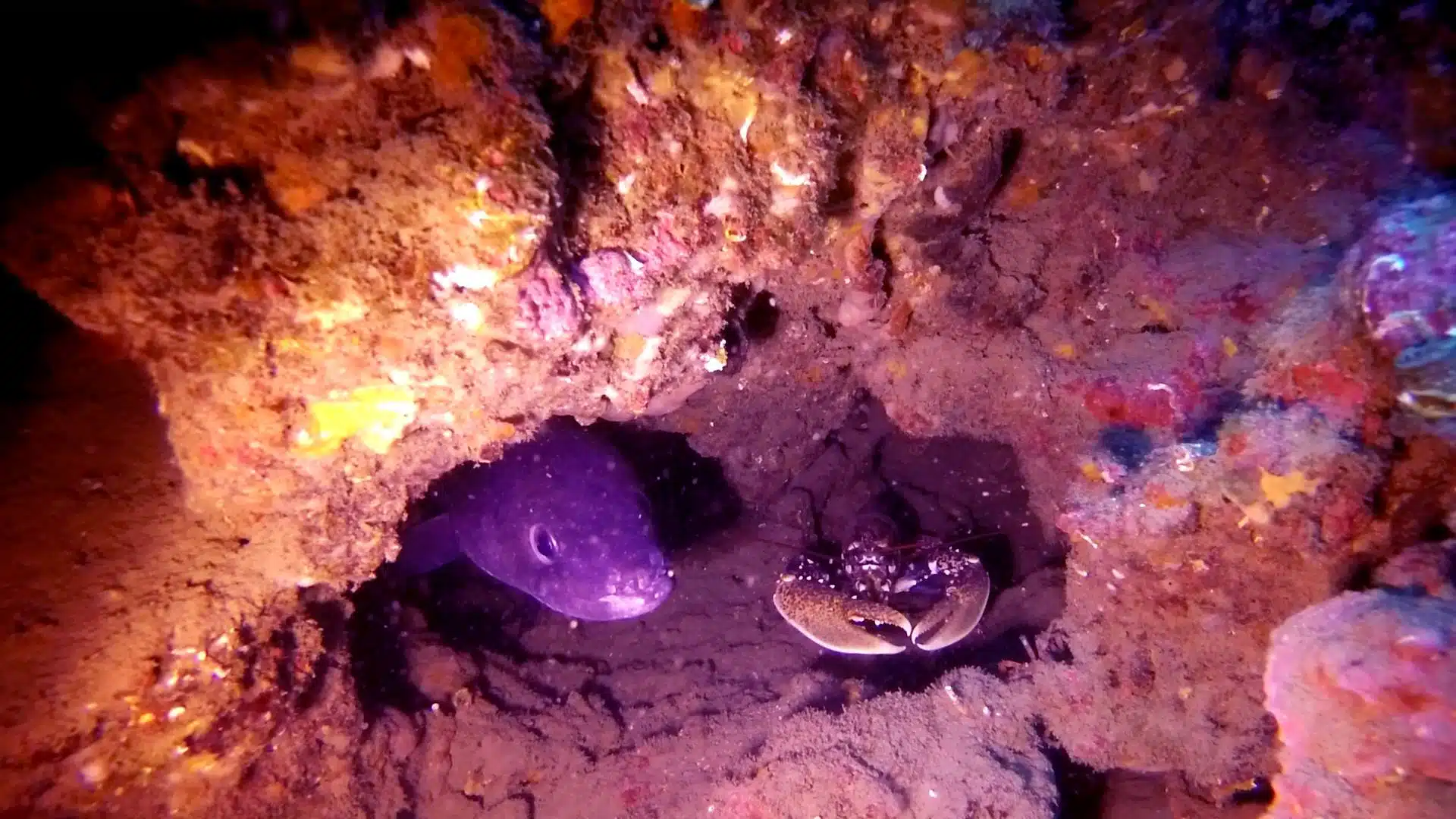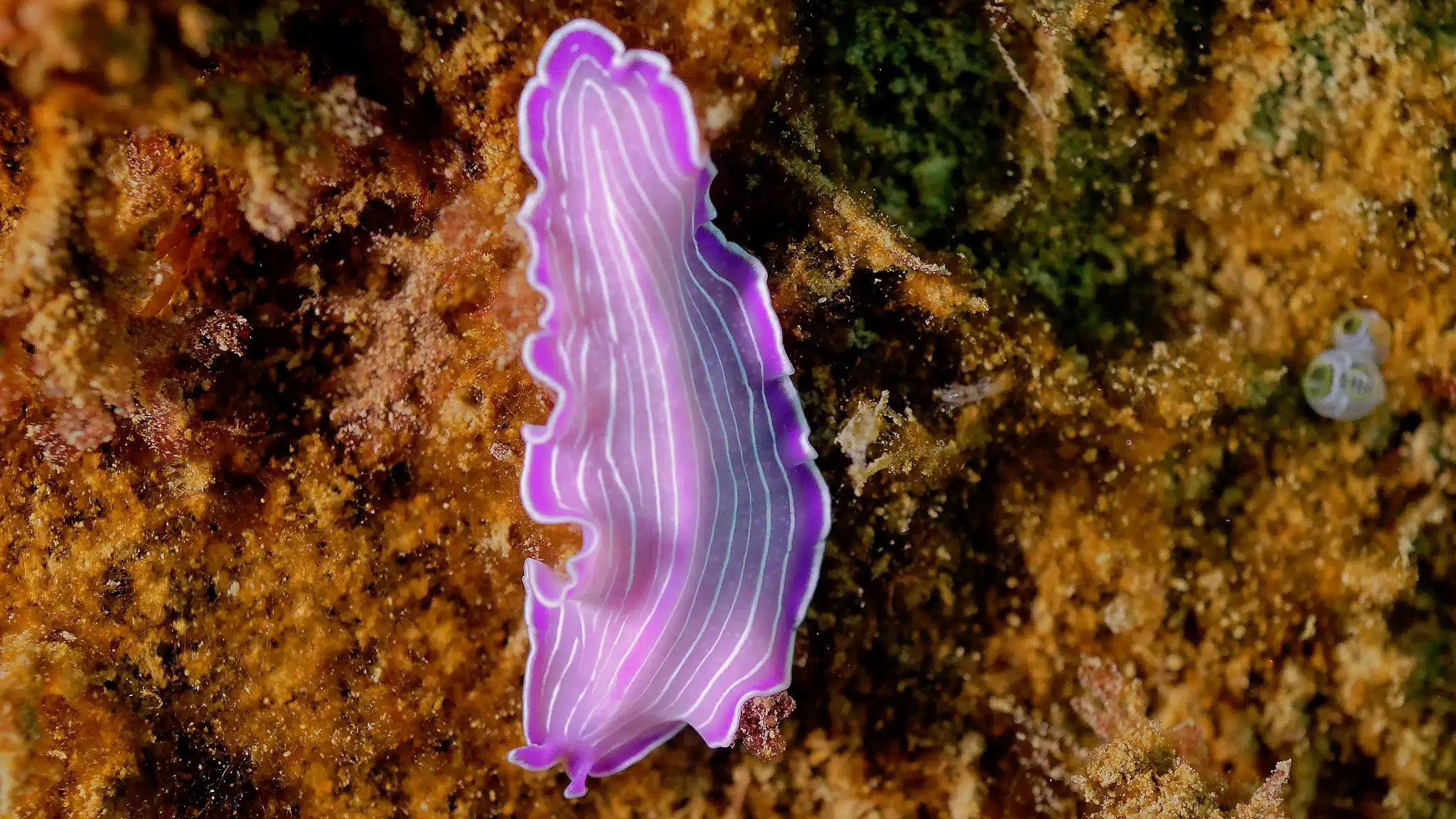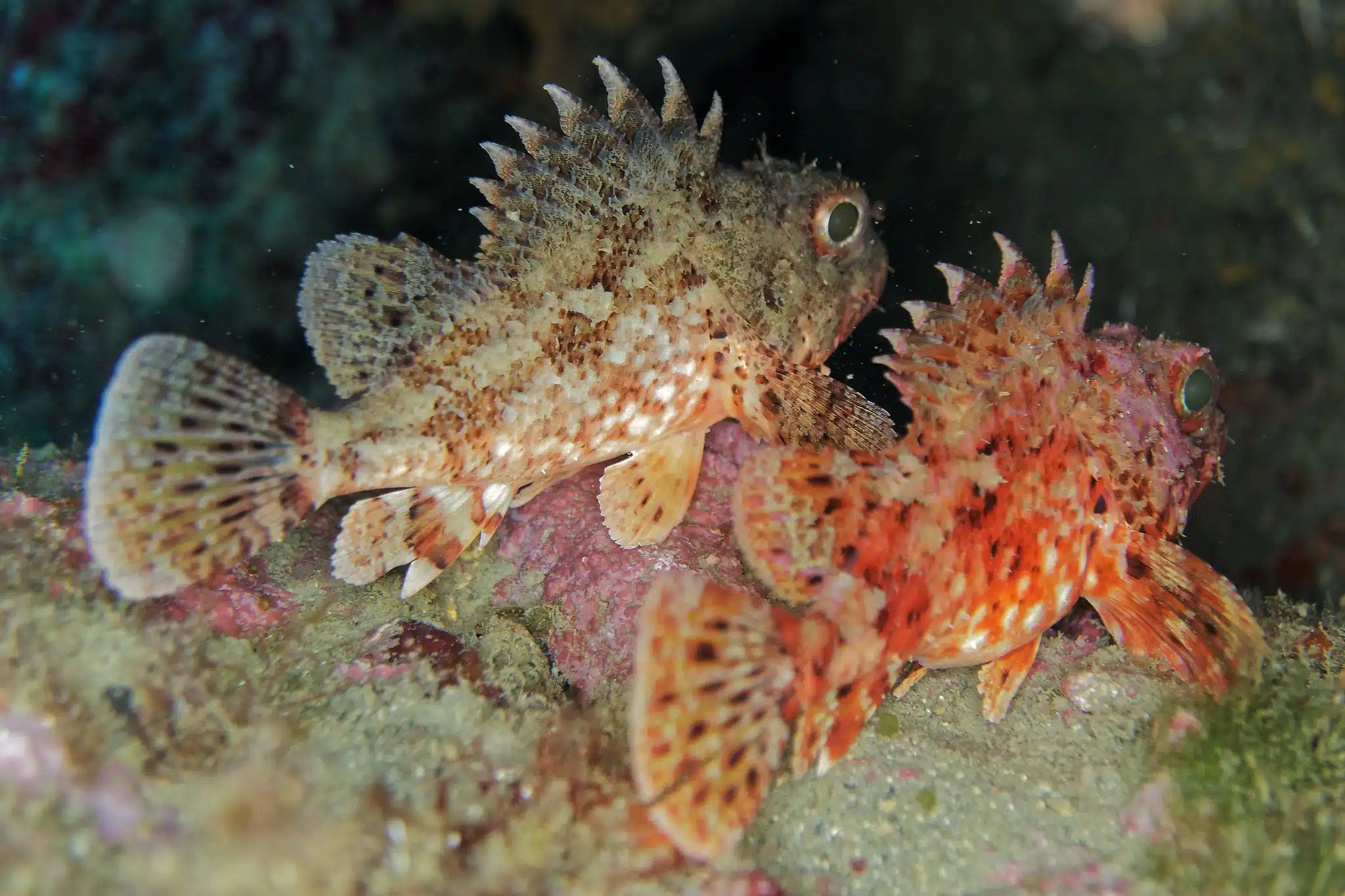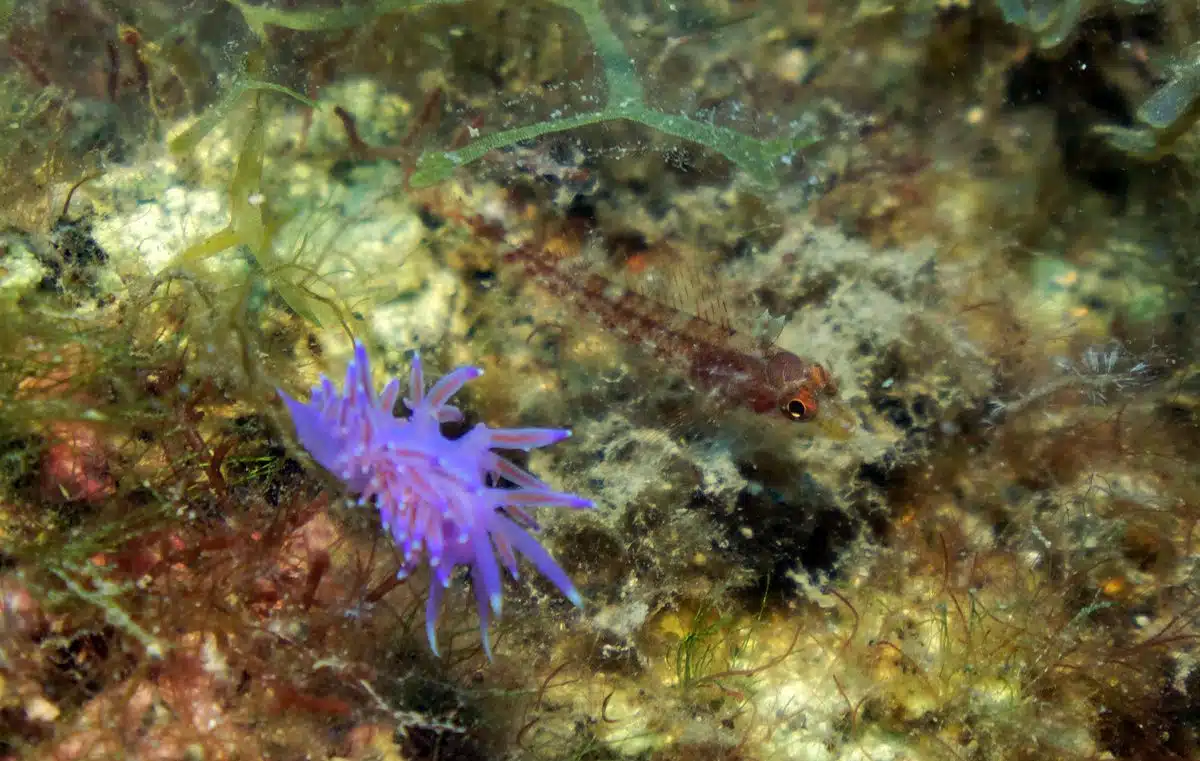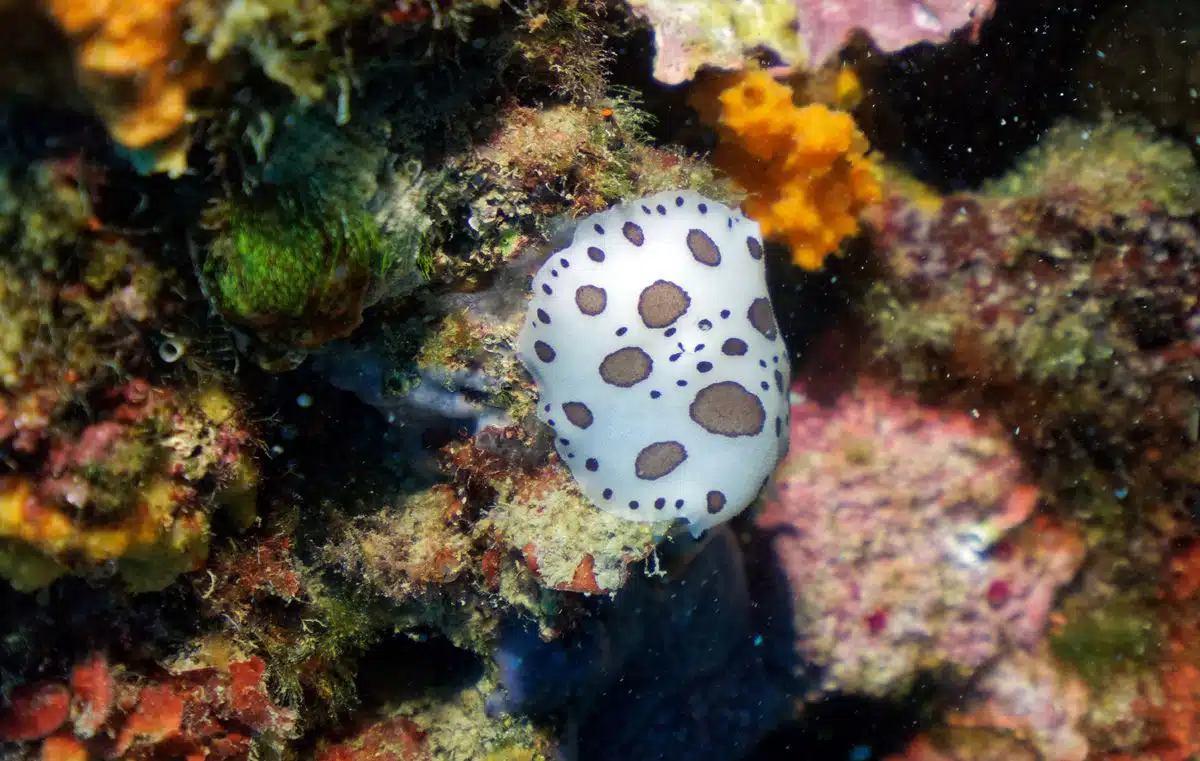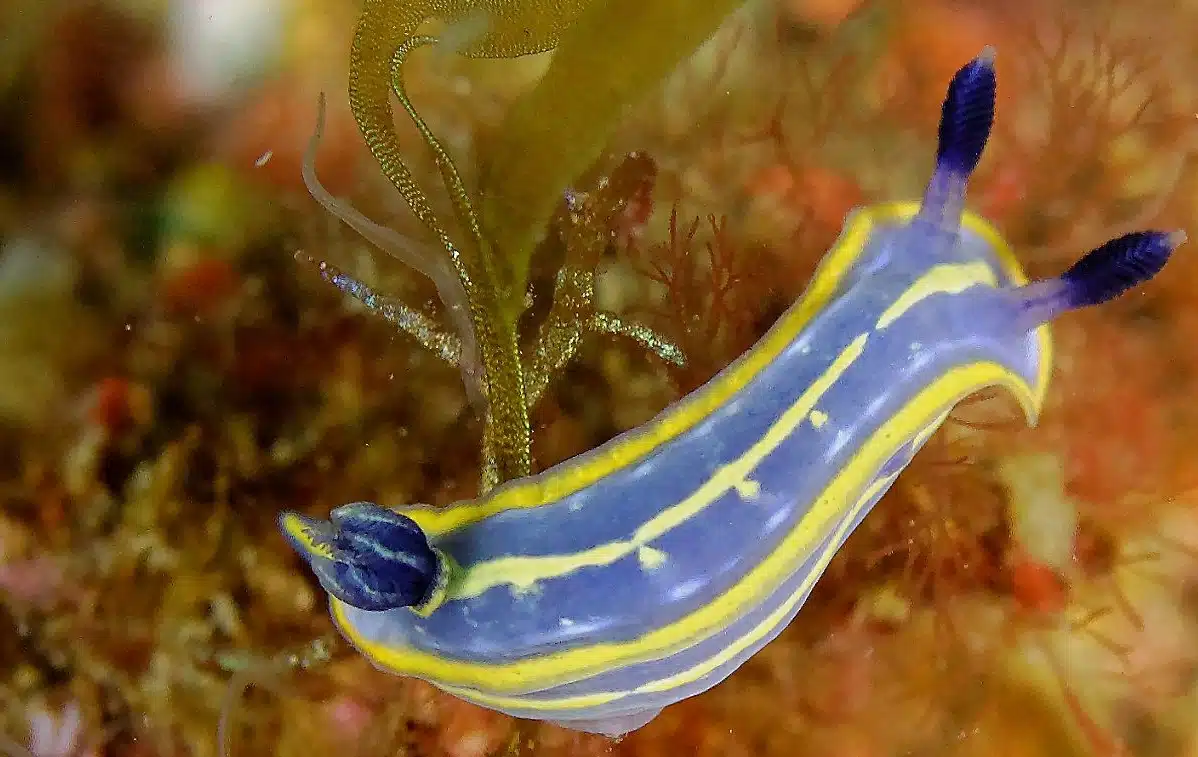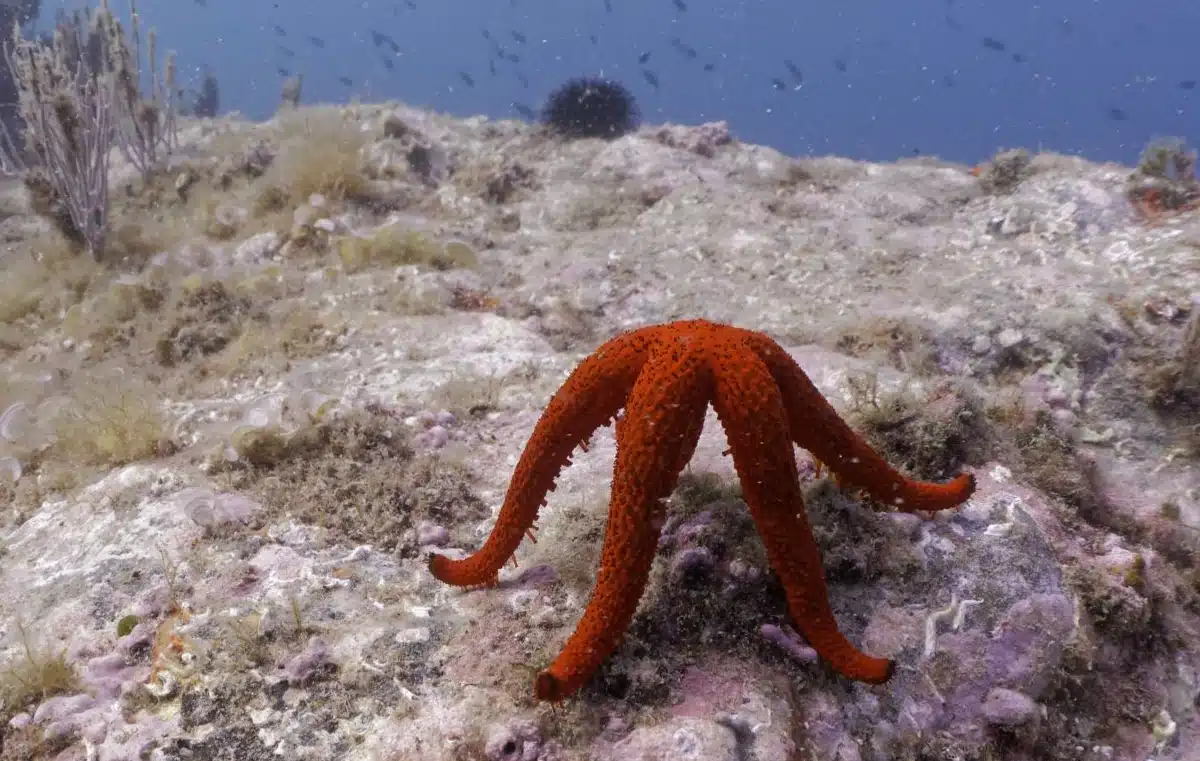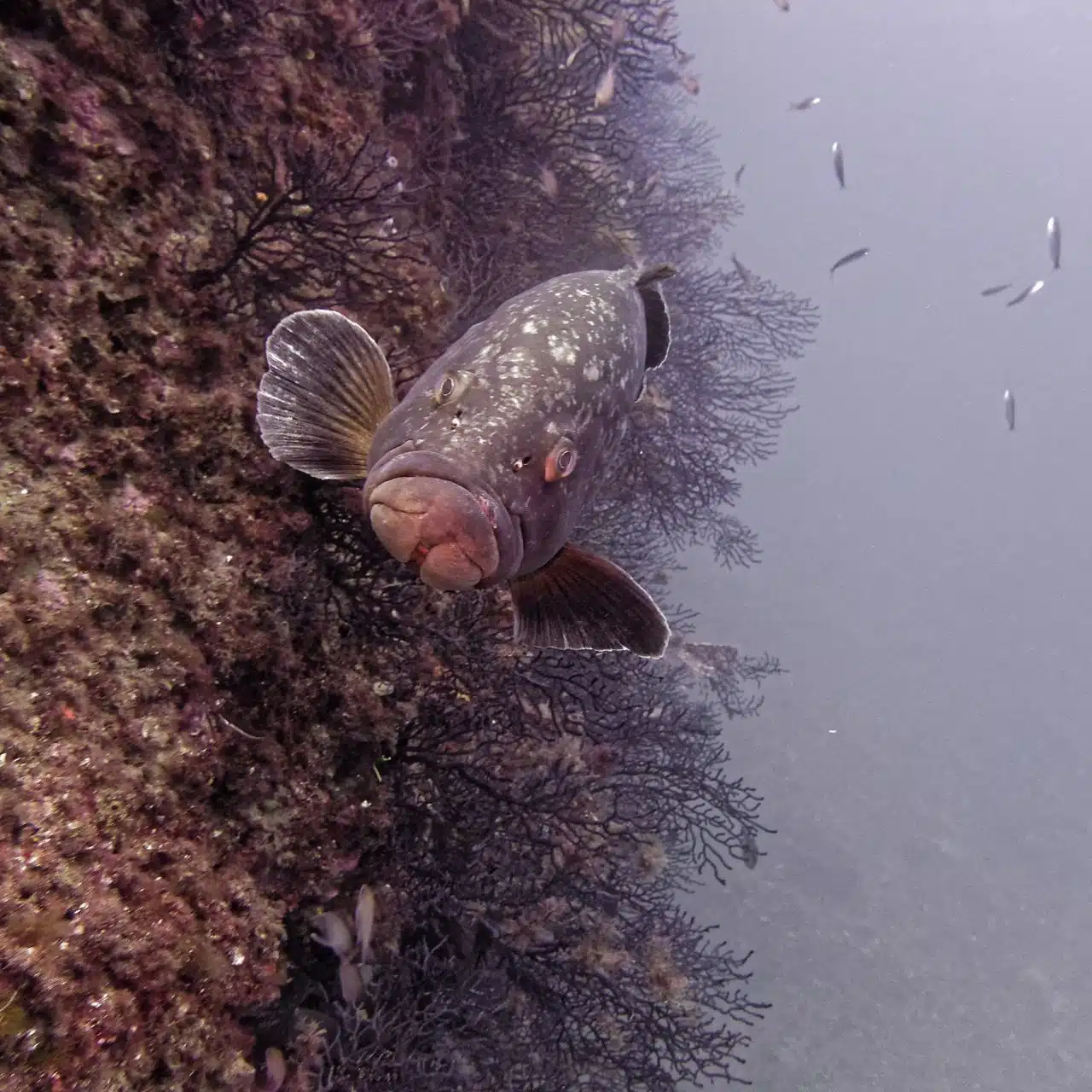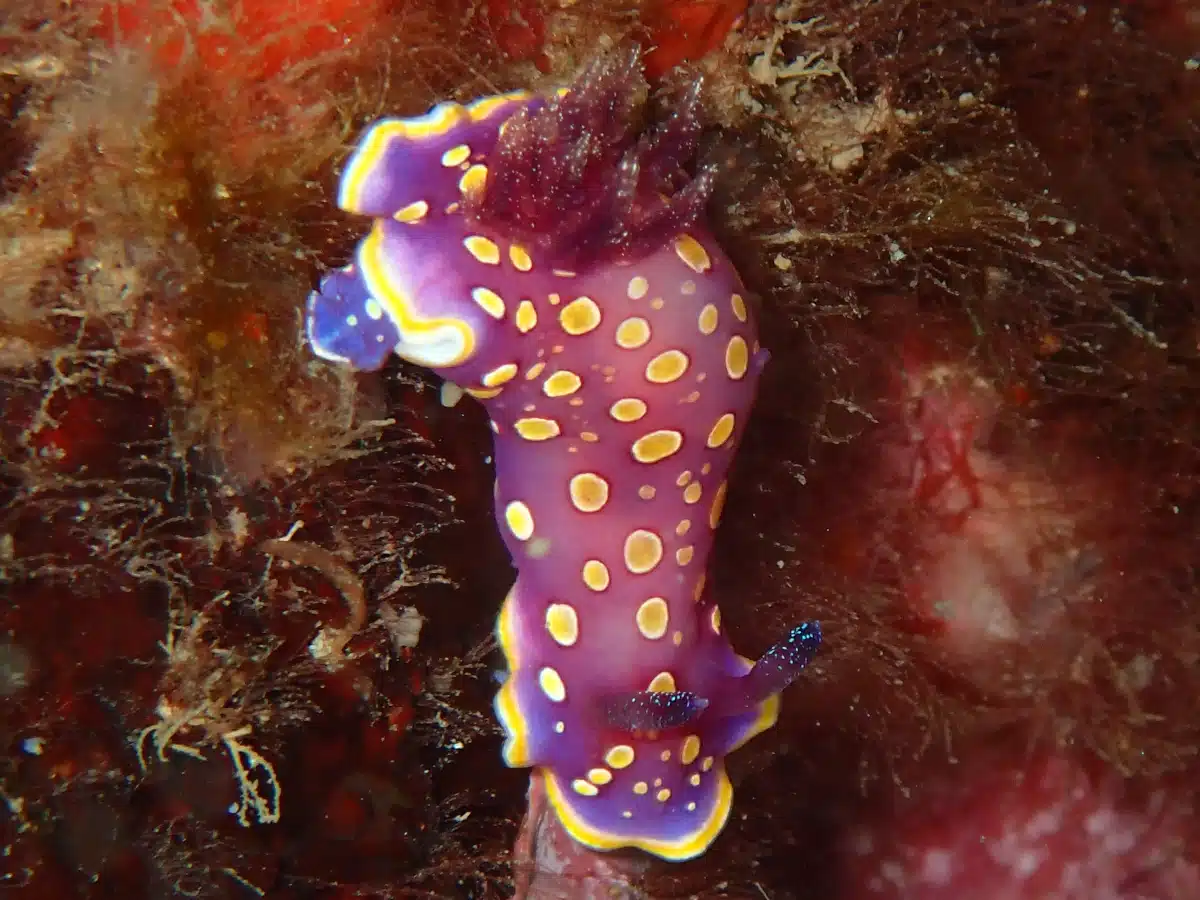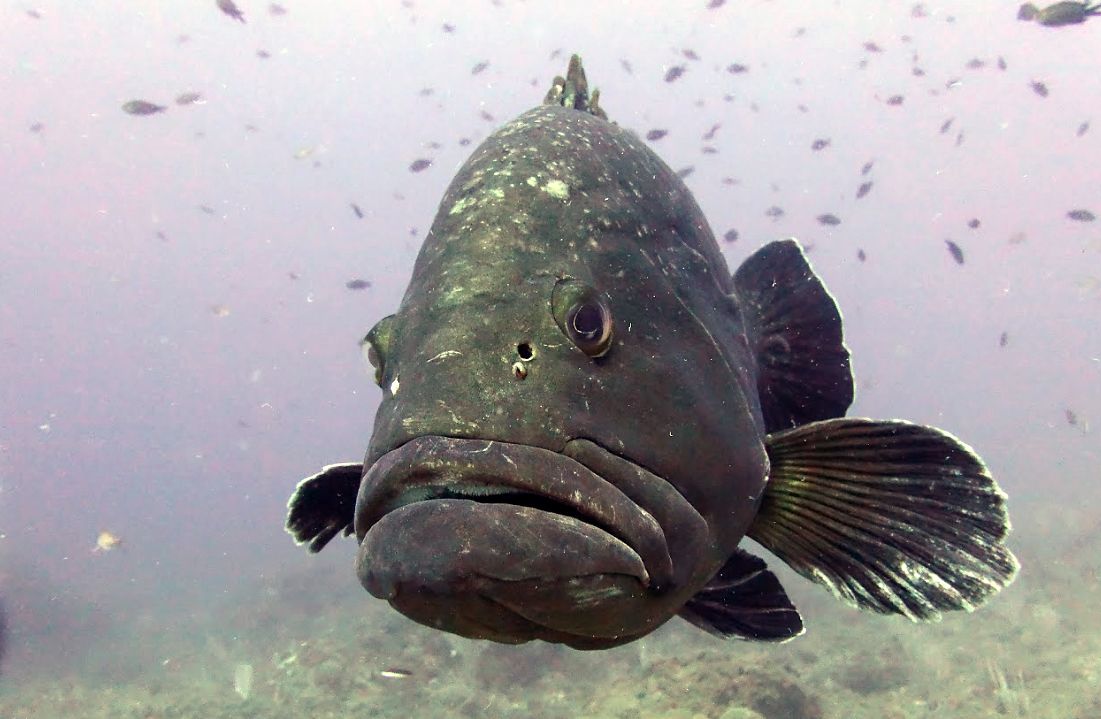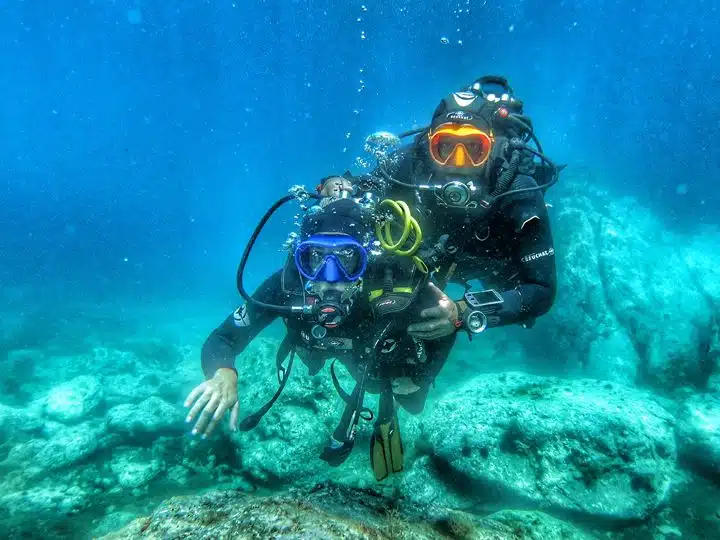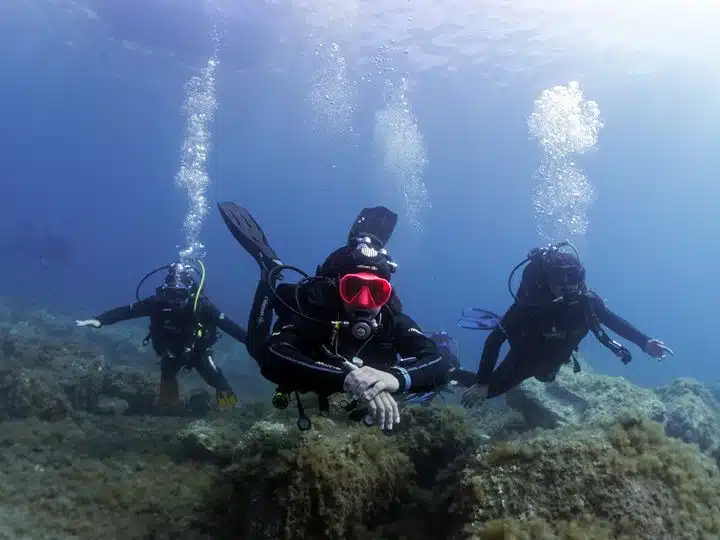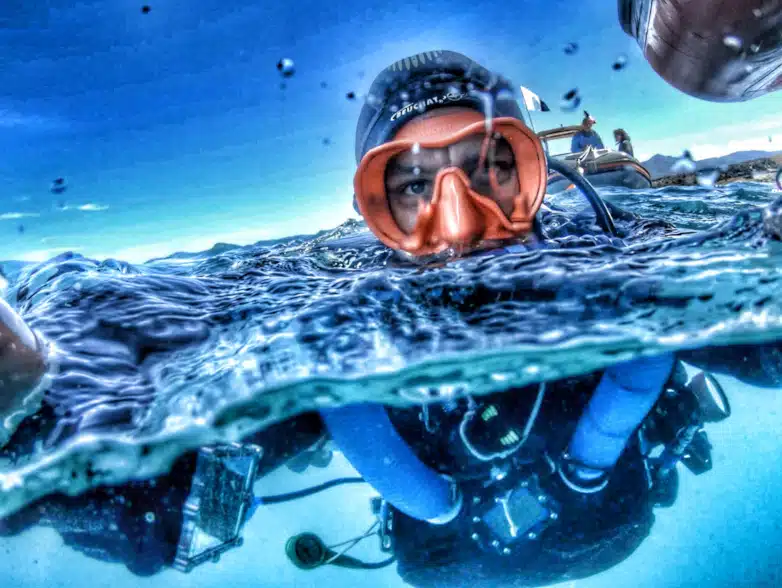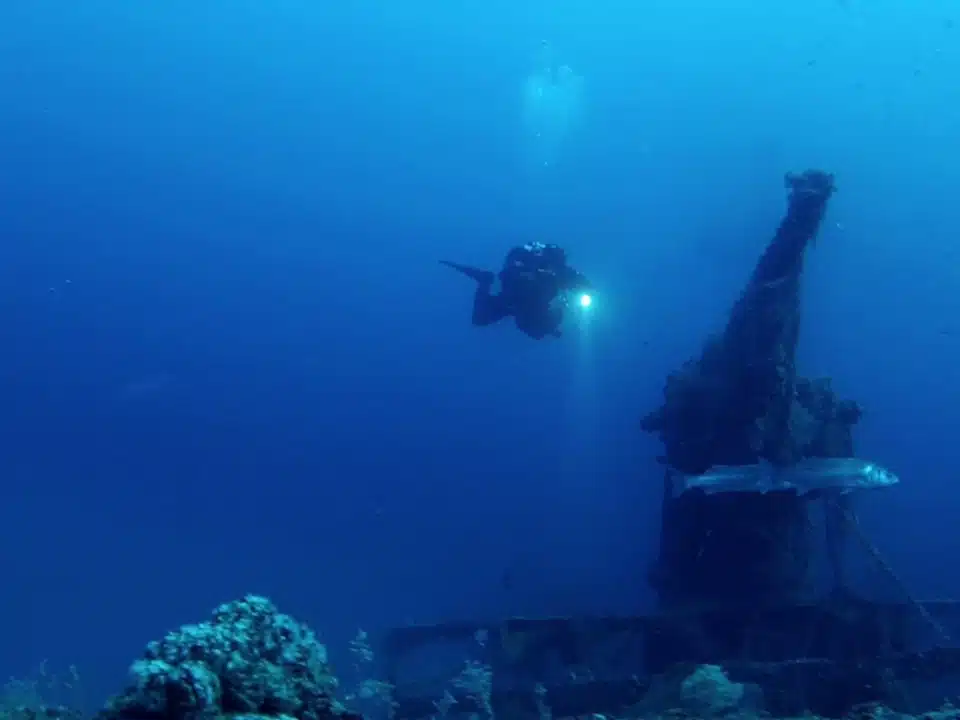The Cerbère-Banyuls Marine Natural Reserve will make you discover an exceptional biodiversity
Protected since 1974, you will observe a rich and abundant life: grouper s, barracudas, wise, royal dorades, corbs
for lovers of exploration and macro photo , the fixed fauna offers many colorful subjects: corals, anemones, lobsters, nudibranchs etc.
- Cap l’Abeille : Corbs, grouper S, dentis, zebra seabream , Castagnoles, Mournes, Mostelles, conger eel S, lobsters, nudibranches, coral, alcyons, etc.
- The three monks/the dome: Corbs, grouper S, dentis, zebra seabream , Castagnoles, etc.
- Les Tinyes: common, zebra seabream , dentis, Dorades, Doris, Flabellines, Bryozoa, ascidies, sponges, etc.
With a little luck, the dolphins will accompany the boat for a little friendly visit
Among the diving sites of the reserve, Cap l’Abeille is distinguished by its rich marine life
This site is particularly appreciated by experienced divers.
During your dive in Cap l’Abeille , you can observe:
- Great grouper , masters of reefs
- Dentis with a piercing look
- From zebra seabream to distinctive stripes
- Castagnoles in constant moving
- Mourns emerging from their shelters
For those who prefer more discreet creatures, you will also find lobsters with long antennas and colored nudibranchs
The 10 golden rules of the eco-responsible diver
Immerse yourself like your shadow ... Do not leave any trace!
“I like the sea and I protect it. »»
- Never put yourself in the water while walking on the reeds, the aquatic plants, the living corals.
- Be master of your buoyancy.
- Keep corals and other animals remotely, do not stir the sediments.
- Check where you get anchor if you dive from a boat.
- Do not disturb, touch and feed animals.
- Do not fish and buy corals and shells.
- Be very attentive during diving in caves: bubbles and simple contact can destroy their delicate life.
- Keep the diving sites clean.
- Get to know the underwater life, avoid any destruction.
- Encourage your diving companions to follow these rules.
Charter of 15 eco -responsible commitments Horizon 2024: FFESSM
Photographs Sylvie and Denis Bellanger


